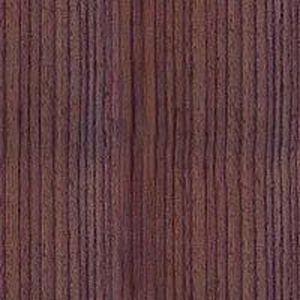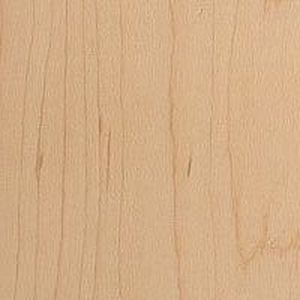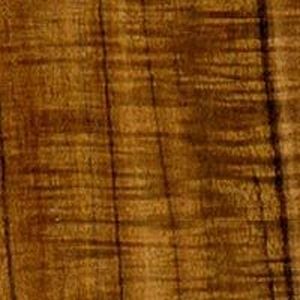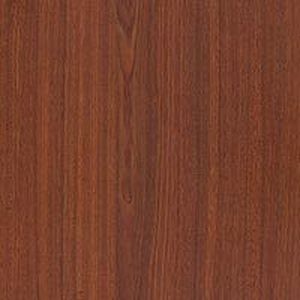6. Woods
The choice of wood is almost more important in acoustic guitars than in any other instrument. With few exceptions, the natural wood with its typical grain is visible or even a design feature of every acoustic guitar. Instead of a finish, the surfaces are sometimes only oiled or waxed. Some models have a solid lacquer coating. Therefore, special attention must be paid to the quality of the grain. Maple, bubinga, rosewood, wenge, walnut, ash, mahogany, and maple are some of the most popular types of wood used in guitar construction, found in the back, sides, top, and neck.
The choice of materials for building a guitar is important not just for its appearance but also for the influence these materials have on the instrument's sound. Here are the key woods and their tonal characteristics:
Maple
The transparent, clear sound of maple wood, with its well-defined highs and lows, performs well in all areas of instrument construction. Thanks to its strength, maple is also the first choice for necks (and fingerboards). Maple tops provide electric guitars with the necessary projection. In the acoustic guitar business, it is often used for the tops of flat-top guitars, delivering clear, precisely defined highs and softly growling lows. But it is also the preferred tonewood for the construction of backs and sides.
Birch
Birch is rarely used in contemporary guitar building. However, in the early 20th century, guitar makers used the wood as a base for constructing the backs and sides of acoustic guitars.
Cocobolo
This wood is a type of rosewood and comes from Central America. Due to its tonal resemblance to the legendary Brazilian rosewood, it is becoming increasingly popular in guitar construction.
Ebony

Common ebony
Similar to rosewood, this tropical hardwood is characterized by above-average density and strength.

Macasar ebony
This very expensive wood is primarily used in instruments where price is not a concern. In guitars/basses, the hard wood is often used for making fingerboards. More expensive acoustic and jazz guitars frequently feature bridges made of this dark exotic wood.
Oak
Oak is rarely used in contemporary guitar building. However, in the early 20th century, guitar makers used this stable wood to construct the backs and sides of acoustic guitars.
Spruce

Sitka spruce
Especially for the construction of acoustic guitar tops, spruce is the top choice. The wood delivers a warm, open, powerful tone and is processed in various grades. The most well-known subspecies are Sitka spruce, Engelmann spruce, and Adirondack spruce. Compared to cedar, the wood of spruce (from high altitudes) is harder.

Engelmann spruce
Interesting for concert guitars: A concert guitar with a spruce top should ideally feature fine annual rings and exhibit even grain patterns (known as tight growth rings). Some may even have the coveted "bearclaw" figure, which is often seen in Alpine spruce. Initially, the sound of such a guitar might be somewhat muted due to the resin structure and wood moisture. It requires extended playing over time, sometimes even years, in various keys to fully develop its sound. It's recommended that beginners who have acquired a high-quality concert guitar with a spruce top have it played by an experienced guitarist for several months. This extended play-in period allows the guitar's complete overtone spectrum to unfold. The sound it produces is soft and delicate, often described as having a soulful quality. Each note is distinctly articulated. As a result, it offers exceptional tonal possibilities and skilled players can further refine their tone on such an instrument. The tonal lifespan of a spruce top guitar can extend well over a hundred years.
Cedar
As a top material for acoustic guitars, cedar wood, which is softer and more elastic compared to spruce, provides a warm, very resonant tone and quick response, making it ideal for classical guitars and steel-string fingerstyle acoustic guitars.
Since cedar wood is relatively soft, care should be taken to ensure that the thickness of the top is not too thin. It sounds slightly harder, rougher, louder, and more direct than a spruce top guitar. In comparison to spruce, it requires almost no breaking-in period, meaning that after a relatively short playing time (100 hours), its tone is fully developed and matured. It accommodates the player in a certain way because even without increased activity in proper treatment, good sound characteristics can be heard immediately. On the other hand, its tonal development possibilities and tonal lifespan (about 70 years) are lower due to the wood structure.
Koa
This wood originates from Hawaii and fascinates with a very intense grain pattern. Originally, Koa was exclusively used for the construction of ukuleles and Hawaiian guitars. However, throughout the 20th century, more and more American guitar manufacturers discovered the advantages of this extraordinary material. Koa delivers a very clear, transparent sound with pronounced midrange/high-midrange.
Lacewood
... grows in Australia, as well as Central and South America, and provides a voluminous, differentiated sound with a quick response.
Mahogany
One of the most popular and versatile woods in guitar construction. The delivered tone is rich in sustain, warm, and balanced, with subtle highs and singing overtones.
Nato
This mahogany subspecies possesses similar characteristics to its more well-known "relatives."
Rosewood (Palisander)
Rosewood, much like ebony, possesses exceptional density and strength, making it an excellent choice for crafting fingerboards and bridges, particularly in the construction of acoustic guitars. In acoustic guitar building, the tonal qualities of rosewood are highly prized. It's often favored for crafting the backs and sides of acoustic guitars, producing strong bass tones and brilliant overtones.

Brasilian rosewood

Indian rosewood
INFO: Brasilian Rosewood - twenty years ago, this coveted tonewood was already very rare and expensive. By now, the population of these trees has declined to such an extent that Brazilian Rosewood is protected under the Convention on International Trade in Endangered Species (CITES) and is no longer freely available. Only wood from trees that were harvested before the cutoff date of July 11, 1992, can be exported or processed. As an almost equivalent (and much more affordable) alternative, Indian Rosewood is typically used nowadays.
Cypress
When it comes to building Flamenco guitars, Cypress is traditionally the first choice. The wood is relatively lightweight and delivers a percussive, dry, and very bright sound – ideal for the rapid, crisp rhythms and runs in Flamenco music.



















